

Understanding the traffic light sequence is crucial when you’re learning how to navigate the roads. While it’s common to focus on the less frequent road signs and symbols, it’s vital not to overlook the everyday ones, like traffic lights.
Traffic lights are more than just familiar street furniture; they’re key to managing traffic and preventing accidents. Knowing what each signal in the traffic light sequence means is essential, not just for your theory test but also for practical test.
This guide will walk you through the entire traffic light sequence, including the less common flashing amber lights. We’ll delve into the significance of green filter arrows and emphasise why it’s important to stop at red lights, even when an emergency vehicle is behind you.
Traffic lights are an essential component of road infrastructure, designed to regulate and manage the movement of vehicles and pedestrians.
The primary purpose of traffic lights is to ensure that road users can navigate intersections and crossings safely and efficiently.
By assigning the right of way to different streams of traffic, traffic lights help prevent accidents and promote orderly flow on the roads.
Traffic lights control traffic flow by using a system of coloured lights—red, amber, and green—to communicate with drivers and pedestrians.
Each colour conveys a specific instruction, guiding when it is safe to go, when to prepare to stop, and when stopping is mandatory.
This system is crucial for managing intersections where multiple roads converge, as it prevents conflicting movements that could lead to collisions.
Modern traffic lights often incorporate sensors and timers to adapt to real-time traffic conditions, enhancing their ability to manage traffic flow efficiently.
For example, during peak hours, the green light might stay on longer for busy directions to alleviate congestion.
Conversely, during off-peak hours, the lights can be timed to reduce unnecessary waiting.
One of the primary roles of traffic lights is to enhance road safety. By clearly indicating who has the right of way, traffic lights reduce the likelihood of accidents at intersections.
The red light stops traffic completely, preventing potential collisions that can occur when drivers misjudge the intentions of other road users.
The amber light serves as a warning, giving drivers time to prepare to stop, which reduces abrupt braking and the risk of rear-end collisions.
Moreover, traffic lights contribute to road safety by managing pedestrian crossings.
Pedestrian signals, often integrated with traffic lights, provide safe intervals for pedestrians to cross roads, thereby reducing the risk of accidents involving pedestrians.
Traffic lights play a crucial role in reducing traffic congestion. By regulating the flow of vehicles through intersections, they prevent bottlenecks that can lead to significant delays.
When properly timed, traffic lights can improve the overall efficiency of a road network, ensuring that traffic moves smoothly even during busy periods.
Advanced traffic light systems use data from sensors and cameras to adjust their timing dynamically.
This real-time adjustment helps manage varying traffic volumes, ensuring that congestion is minimised.
For instance, during peak hours, traffic lights may allow longer green phases for heavily travelled routes, while during lighter traffic periods, they can revert to shorter cycles.
Traffic lights significantly enhance pedestrian safety by providing controlled crossing points.
Pedestrian signals often work in conjunction with traffic lights, indicating when it is safe for pedestrians to cross the road.
These signals reduce the risk of pedestrians crossing at inappropriate times, which can lead to accidents.
In areas with high pedestrian traffic, traffic lights are crucial for managing the interaction between vehicles and pedestrians.
The clear indication of when to walk and when to wait helps protect pedestrians, particularly in busy urban environments.
Additionally, features such as audible signals for visually impaired individuals further enhance pedestrian safety.
Navigating through traffic lights is a fundamental skill for all drivers. Here’s a straightforward breakdown of the typical traffic light sequence and what each phase signifies:
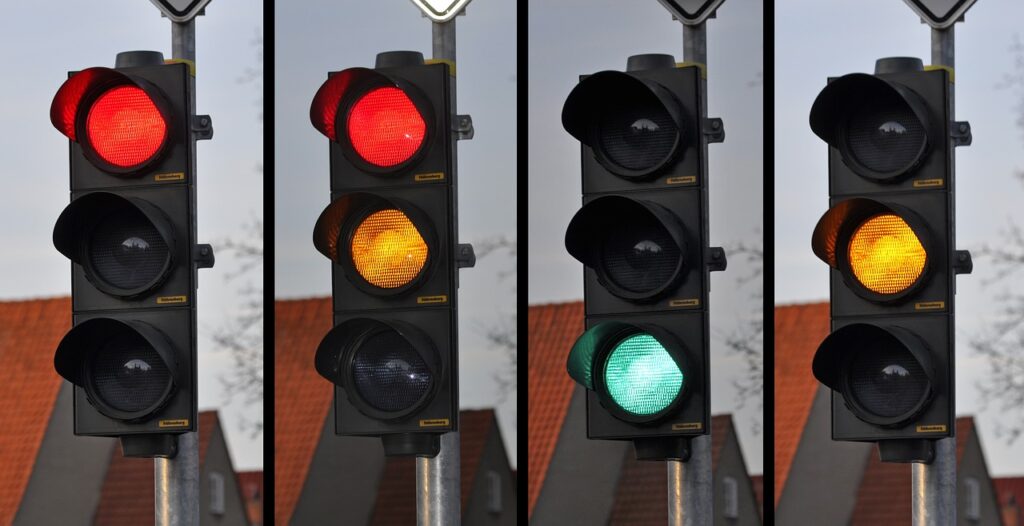
And then, the sequence repeats!
While this might sound straightforward, it’s crucial to fully understand these rules to ensure safe and confident driving.
Understanding and adhering to traffic light rules is a fundamental aspect of safe driving. Here’s an in-depth look at what to do when you encounter a red light:
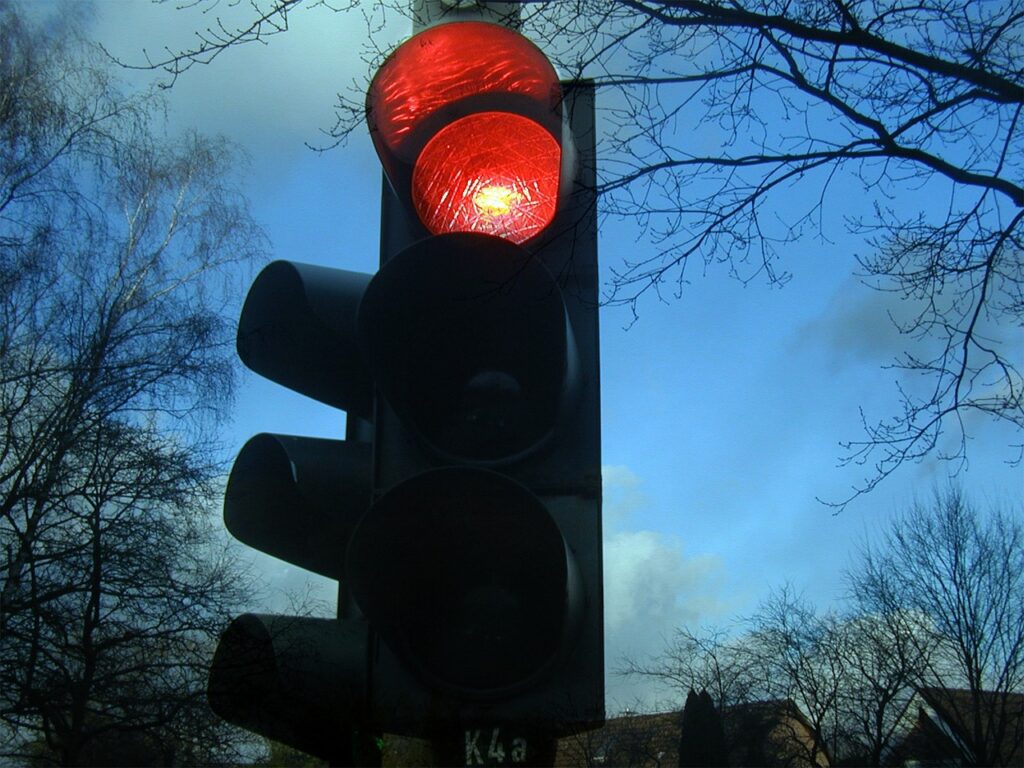
When faced with red and amber lights at a traffic junction, it’s essential to understand and follow the correct procedure:
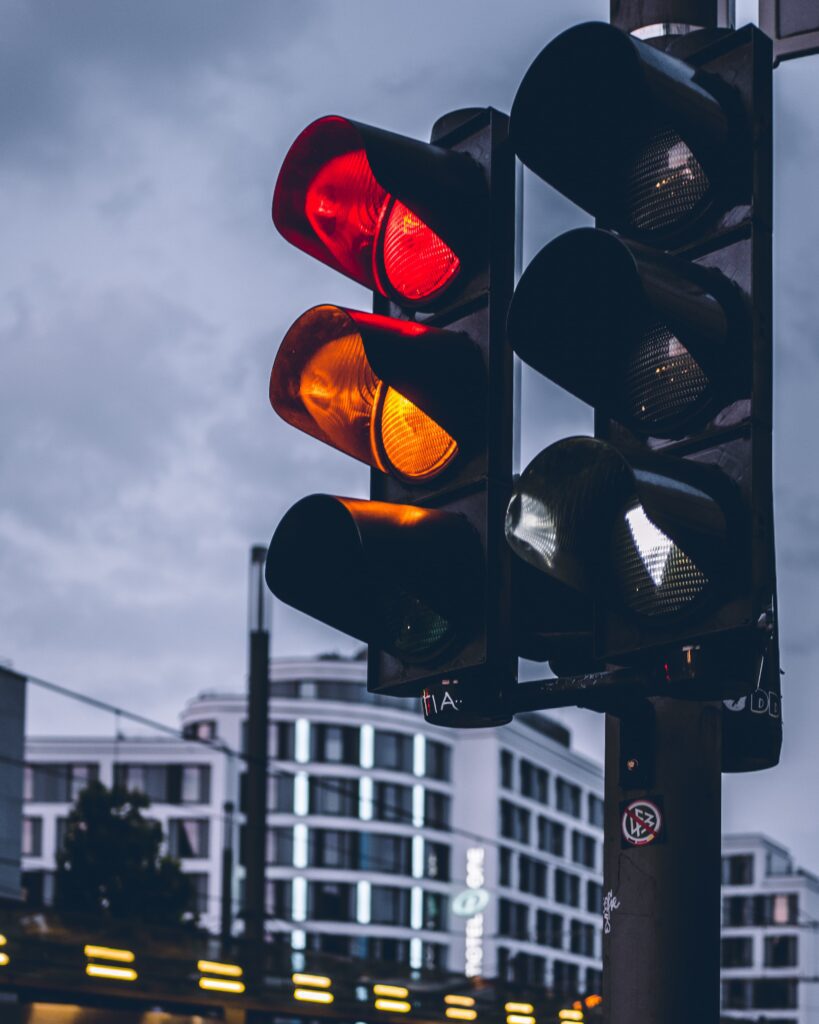
Understanding the specific rules for flashing amber traffic lights, especially at pedestrian crossings like pelican crossings, is crucial for safe driving:
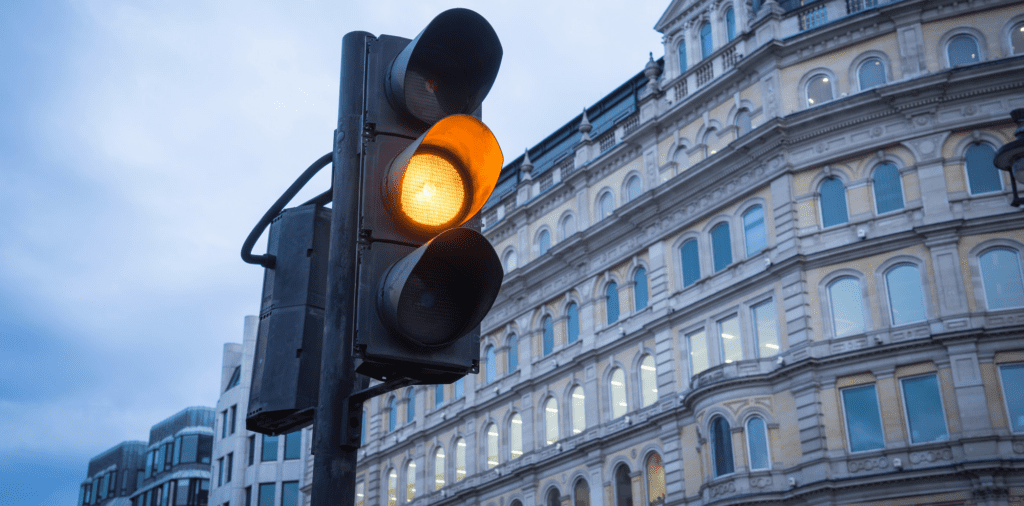
Effectively and safely pulling away when a traffic light turns green is a key aspect of driving:
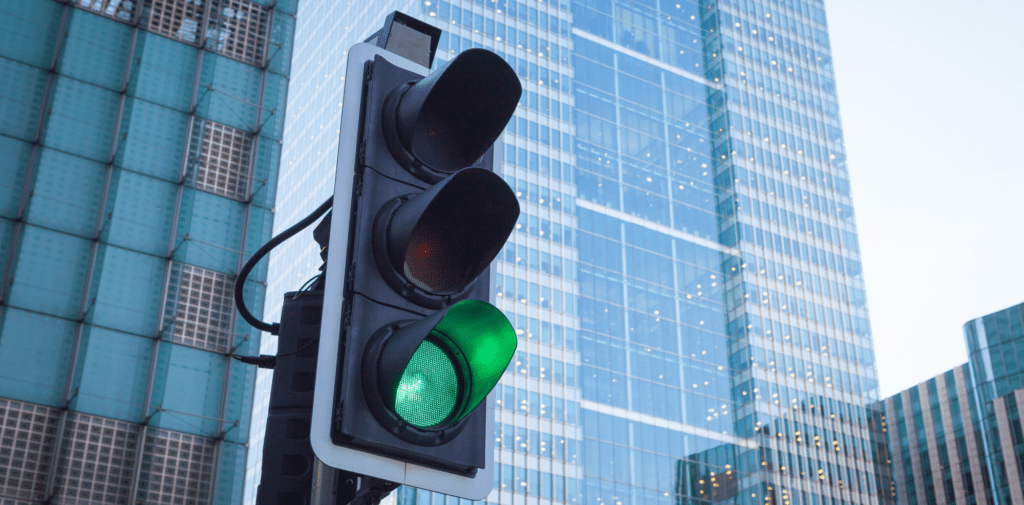
Navigating through traffic lights is an everyday task for drivers, and understanding the significance of a steady amber light is crucial:
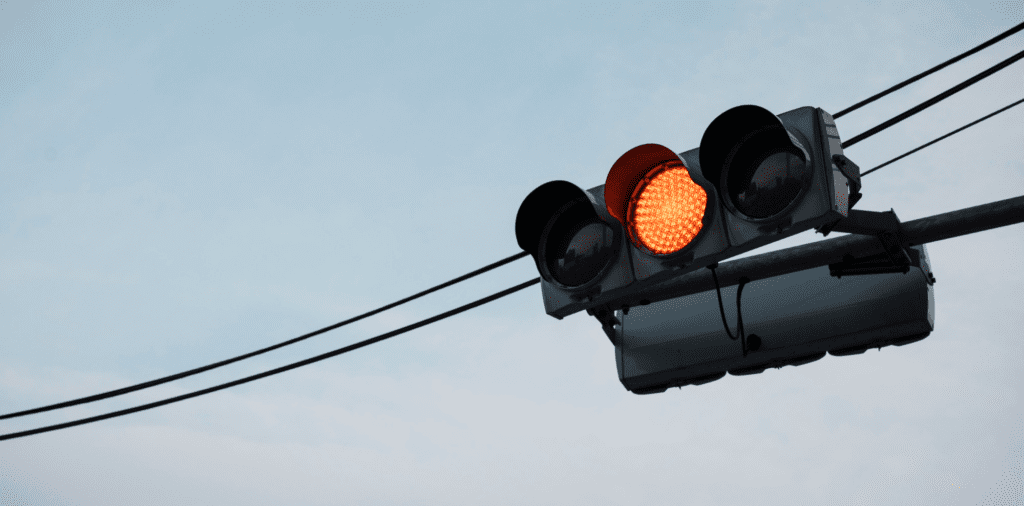
The green filter arrow at traffic lights is a crucial signal that drivers need to understand and respond to correctly:

The stop line is a solid white line marked on the road surface at traffic lights. Its primary function is to indicate where vehicles must come to a halt when the traffic light shows a red or amber light.
Stopping at the stop line ensures that you do not block pedestrian crossings or the intersection itself, thus maintaining safety and smooth traffic flow.
When approaching a traffic light, you should always aim to stop before the stop line. If your vehicle crosses this line when the light changes to red, you could be penalised for a traffic violation.
Additionally, being aware of the stop line helps you avoid obstructing the path for other road users, including cyclists and pedestrians.
Yellow box junctions are marked with criss-cross yellow lines and are designed to prevent gridlock at intersections.
These boxes are typically found at busy intersections and indicate areas that must be kept clear at all times, even when the traffic light is green.

When approaching a yellow box junction, you should only enter the box if your exit is clear and you can cross without stopping.
This rule helps prevent vehicles from being stranded in the middle of the intersection, thereby reducing congestion and improving traffic flow.
If the light turns red while you are in the box, you must still complete your crossing, but you should avoid entering the box unless your way ahead is unobstructed.
Pedestrian crossings are essential features at intersections controlled by traffic lights. These crossings are marked with zebra stripes and sometimes accompanied by pedestrian signals.
When a traffic light changes to red, vehicles must stop before the stop line to allow pedestrians to cross safely.

In addition to traditional zebra crossings, you may encounter puffin, pelican, and toucan crossings, each with its specific signal system.
Regardless of the type, the key rule remains: stop at the stop line and ensure the crossing is clear of pedestrians before proceeding.
Advanced stop lines are additional markings found at some intersections, specifically designed to accommodate cyclists.
These lines create a designated space ahead of motor vehicles where cyclists can wait for the light to change.
This positioning allows cyclists to be more visible to drivers and gives them a head start when the light turns green, enhancing their safety.
When approaching an intersection with an advanced stop line, motorists must stop at the first line they encounter, even if there is a second line further ahead for cyclists.
This practice ensures that cyclists have the necessary space to position themselves safely at the front of the queue.
In some situations, there may be no clear stop line at a traffic light. This scenario can occur due to faded road markings, roadworks, or temporary traffic signals.
In such cases, the general rule is to stop before the traffic light itself or where you have a clear view of the intersection and can safely wait without obstructing other road users.
If you are unsure, it is always safer to stop slightly earlier rather than risk crossing into the intersection inadvertently.
Ensuring that you do not block pedestrian paths or the junction helps maintain order and safety, even in the absence of clear markings.